Edinburgh: After 47 years, a new perspective on a Scottish gem
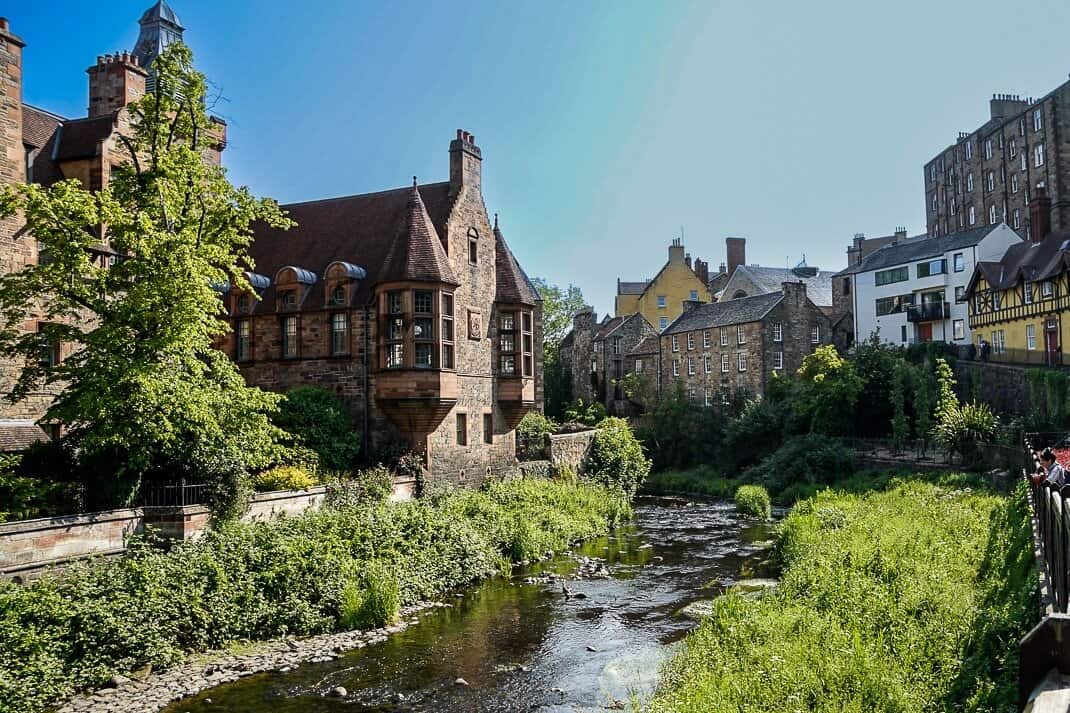
(This is the first of a three-part series on Scotland.)
EDINBURGH, Scotland – When you revisit a place for the first time in nearly half a century, the destination doesn’t change as much as you have. Your tastes, your temperament, your knowledge, all have transformed you into another person. You look at the place as if you’ve never seen it before, with new eyes and a new brain.
It felt like that when I visited Edinburgh two weeks ago. I last visited it in 1978. I was a raw, rookie backpacker taking my first couple steps on a year-long, solo trip around the world, an epic journey that changed my life forever.
I was oh, so naive but so excited I bounced off the subway car all the way into London from Heathrow Airport, the first step of my trip. I was the only traveler I knew who carried a duffel bag over his shoulder instead of a backpack. In the bag I carried a University of Oregon football polo, an American tourist giveaway I wouldn’t wear today unless my life was threatened.
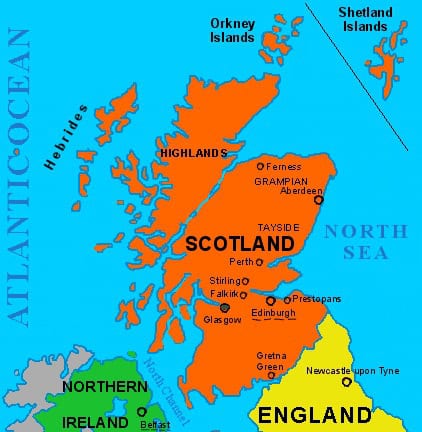
I was a picky eater, a bad trait for a budget traveler. I wouldn’t eat vegetables, scarred for life by my mother’s overcooked canned veggies she stocked as if planning for a nuclear war. How the hell would I eat haggis? I hadn’t taken a foreign language class since three random Spanish lessons in sixth grade. I was I going to communicate in Sweden?
Turns out, I needed a translator more in Edinburgh than Stockholm.
Two weeks ago I arrived 114 countries later with a proper backpack, eight years as a food writer in which I ate everything from insects in Cambodia to live beetle larvae in the Amazon and conversational Italian which, admittedly, is worthless anywhere outside Italy and certain elderly Ethiopians.
Whether it was my clueless nature on how to visit a city or the passing of 47 years, I had forgotten how beautiful Edinburgh was. I tend to lean toward castles that hover over historical districts and Edinburgh Castle moved me more two weeks ago than it did when I was 22. I prowled gorgeous neighborhoods right out of Victorian novels. I ate wonderful food that made Edinburgh feel like a different planet, let alone a different city.
As I sat in Fishers restaurant eating excellent sea bass on a pretty sun-splashed canal, I jotted down some differences in my visits between Edinburgh 1978 and Edinburgh 2025. I didn’t start writing a journal in ‘78 until I reached Denmark two weeks later. However, my memory of certain aspects of Edinburgh remain mostly clear.
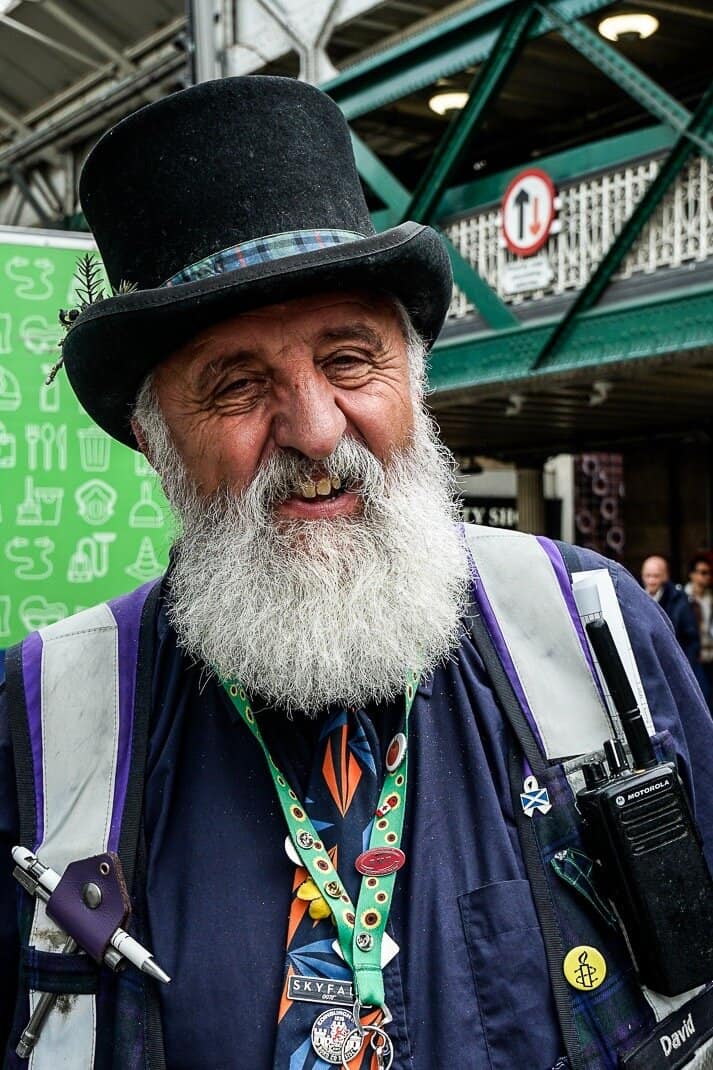
The arrival
Edinburgh remains a special city in my around-the-world trip as it was the first place I took a train. But the joy and freedom I felt from my Britrail pass was offset on my first morning in Scotland by the strong kick to my shins from the Scottish bobby. He took umbrage at my falling asleep on the floor of the Edinburgh Waverley train station, waiting for the Youth Hostel to open.
“This isn’t a boarding house!” he shouted, I think, as I needed Sean Connery to translate his Scottish brogue.
I had traveled to Edinburgh with an old college friend from Santa Monica who met me in London with her two California friends. The woman turned into an absolute witch whose only travel lesson she taught me was never ever travel with a platonic female friend.
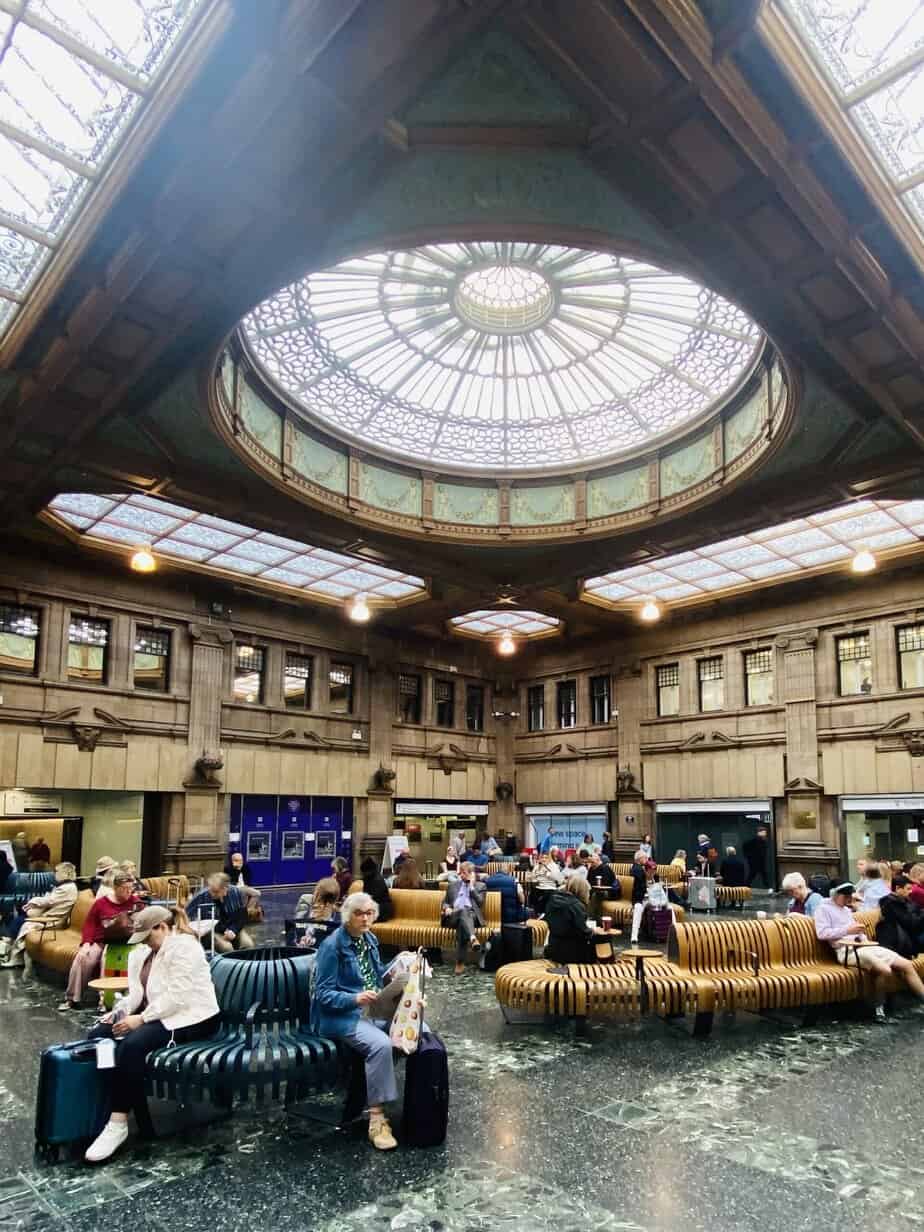
This time I traveled with Marina, my girlfriend and photographer whose history of 50 countries and her ability to travel without a broom gave her 50 advantages over the Santa Monica shrew.
I returned to that same train station. David, a big, jolly information clerk, gave me a little tour. As soon as I entered the waiting area, I recognized the skylight which showed the towering Balmoral Hotel, built in 1902. The round benches, the ones I slept next to, looked the same. David told me the train station was built in the 1860s (1868 to be exact) but replaced the mosaic floors with ugly tiles in the 1990s.
From here in ‘78 and 2025, I left for the Scottish Highlands.
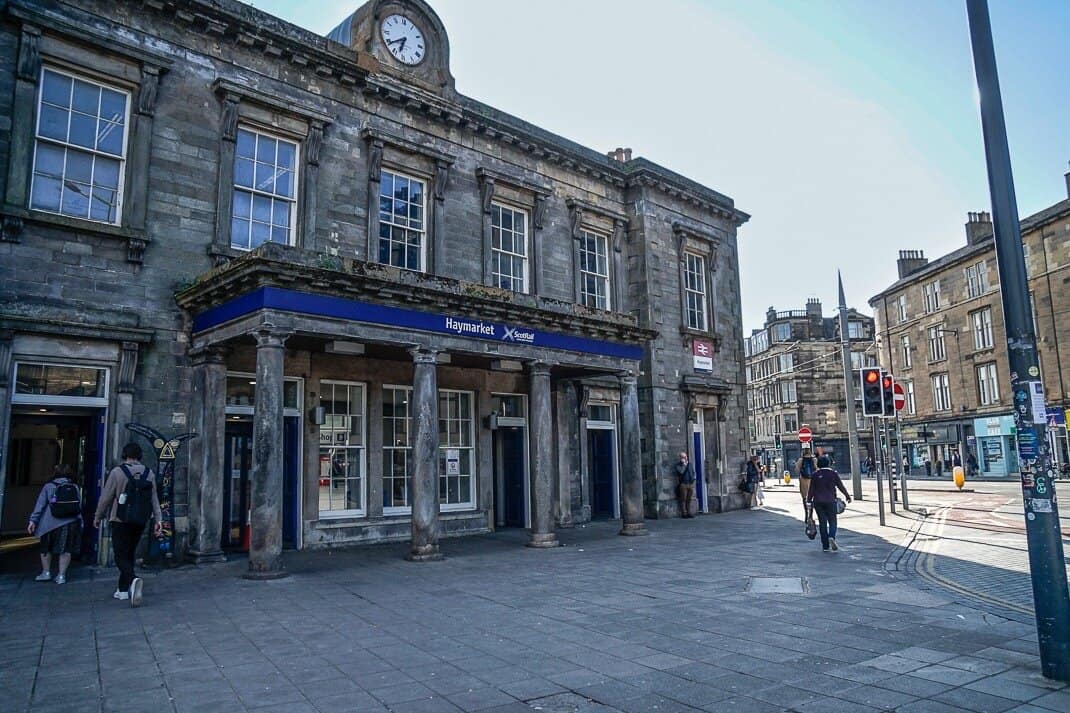
Edinburgh lodging then and now
I traveled around the world for a year on – get this – $4,000. That was 1978-79. That’s what youth hostels and local Asian and North African hotels can do. However, the bargain prices are offset by rooming with up to 30 people in a smoke-filled sleeping porch, or a room, such as the one in El Faiyum, Egypt, where the shower drain doubled as the toilet hole.
Edinburgh’s bargain basement room in ‘78 escapes me which means it was probably only slightly disgusting. As a budget traveler, you live by the mantra of “The more expensive your accommodation, the further you get from local culture.”
Now retired and financially independent with a girlfriend who requires a hotel breakfast buffet, hotels move up on the wish list. Two weeks ago we stayed in the Joivy Haymarket, part of the new wave of annoying self check-in accommodations but featuring a terrific, large room in a great neighborhood.

The Haymarket is in Edinburgh’s West End near Old Town. We could stumble out the front door and fall at the entrance to beautiful Haymarket Station, built in 1842 and still featuring the original Doric-style porticos.
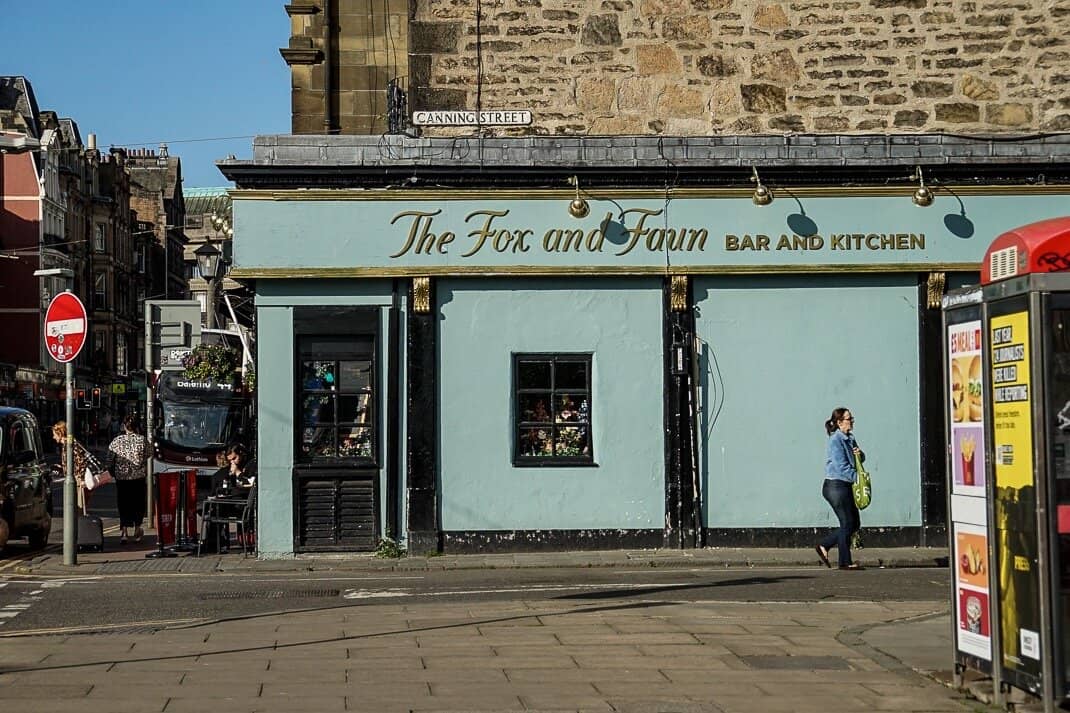
It’s a short walk from The Fox and Faun, a classic Scottish pub where we ate our first Scottish meal: fish ‘n chips with a pint of Edinburgh’s own Innis & Gunn. By the end of our week, I could feel a Scottish brogue coming on.
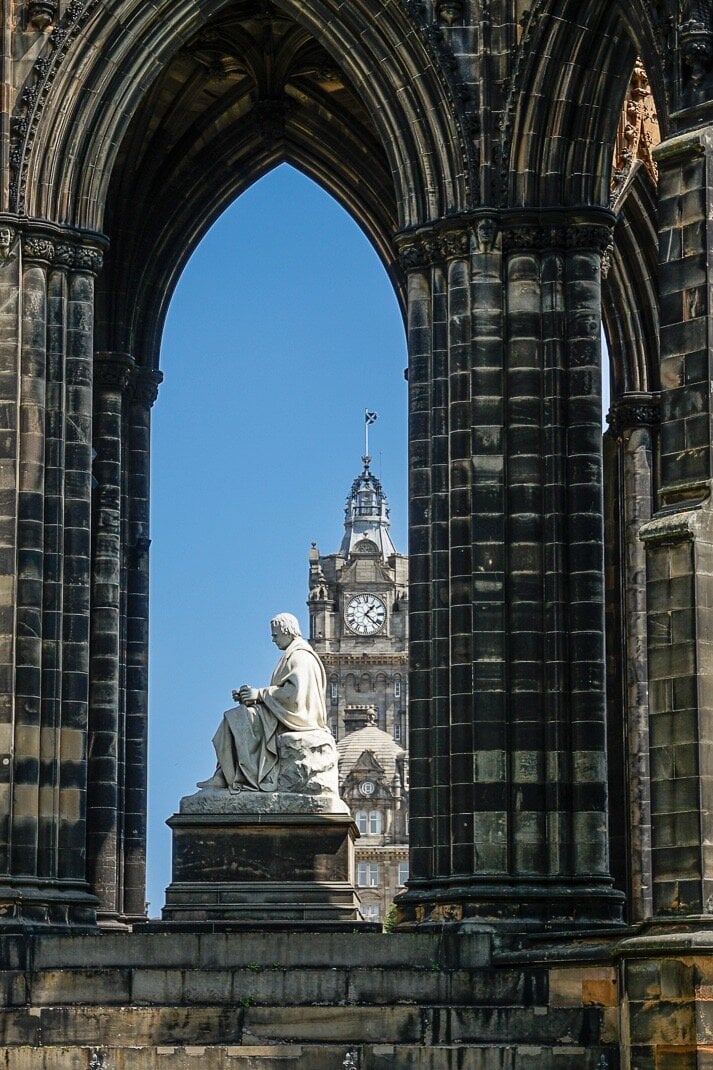
Sir Walter Scott and Dean Village
I remember in ‘78 climbing the 287 steps to the top of the Scott Monument, a 200-foot black tower that looks like a Dark Side spaceship ready to launch toward an innocent planet. It’s named for Sir Walter Scott, Edinburgh’s favorite son, whose Waverley novels provided the name to the train station.
It’s the world’s second.highest monument dedicated to a writer after the Jose Marti Memorial in Havana. I loved the panoramic view from the top and how it brought me closer to Edinburgh Castle on the nearby hill.
But mostly I remember collecting the first of an estimated 1,000 addresses from fellow travelers over the years. After I climbed down, I went to a pub across the street. Wanting something sweet, I saw “CIDER” written on a spigot. I ordered a pint of what I thought was apple juice.
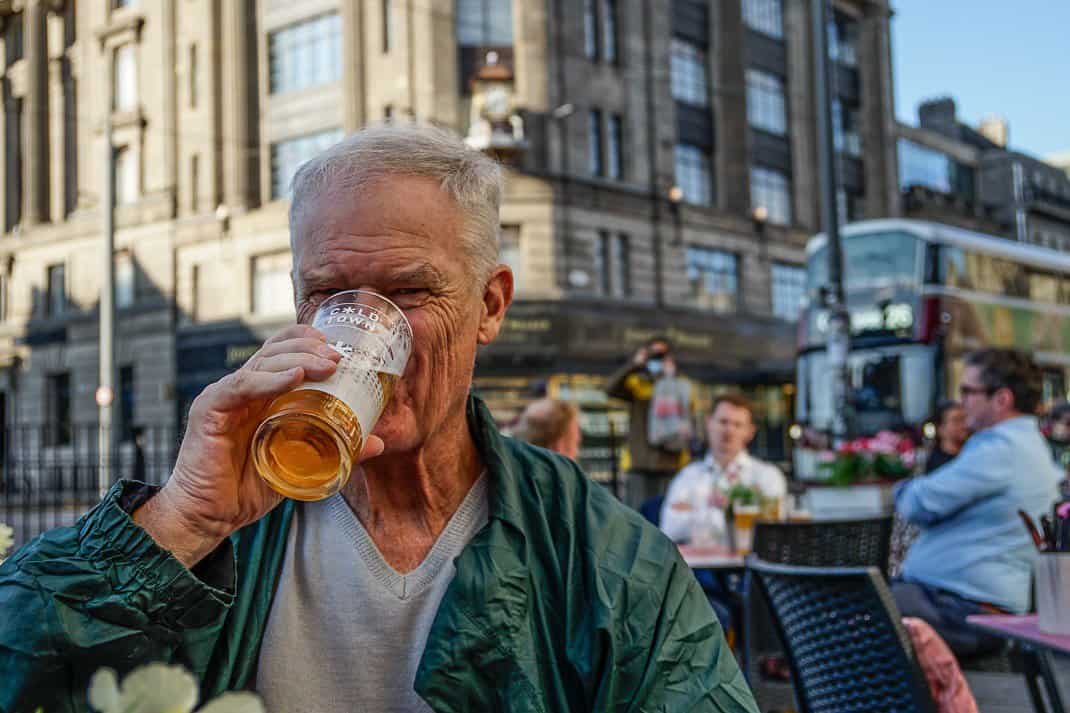
It was the last taste of alcoholic cider of my life. It’s a vile concoction in which its lone redeeming quality was moving the bartender to ask if I was Scottish, as tourists don’t order cider. I could see why.
But in that pub I met another American. His name – I still remember – was Gene Lafitte. Sporting long ‘70s hair like mine with a breezy attitude, he hailed from New Orleans and was meeting a Scottish friend in the pub. His friend was cool, I drank a couple pints of proper Scottish lager and went to the friend’s apartment to smoke pot.
I remember walking back to the room gazing up at Edinburgh Castle, all back lit like a Christmas ornament. I wasn’t high so much from the pot as I was being overseas, alone and happier than I ever had in my life.
The advantage of seeing someplace for a second time is you peel away one layer of culture. This time Marina and I eschewed the main tourist sites. We had both toured the castle. Instead, we explored Edinburgh’s marvelous neighborhoods.
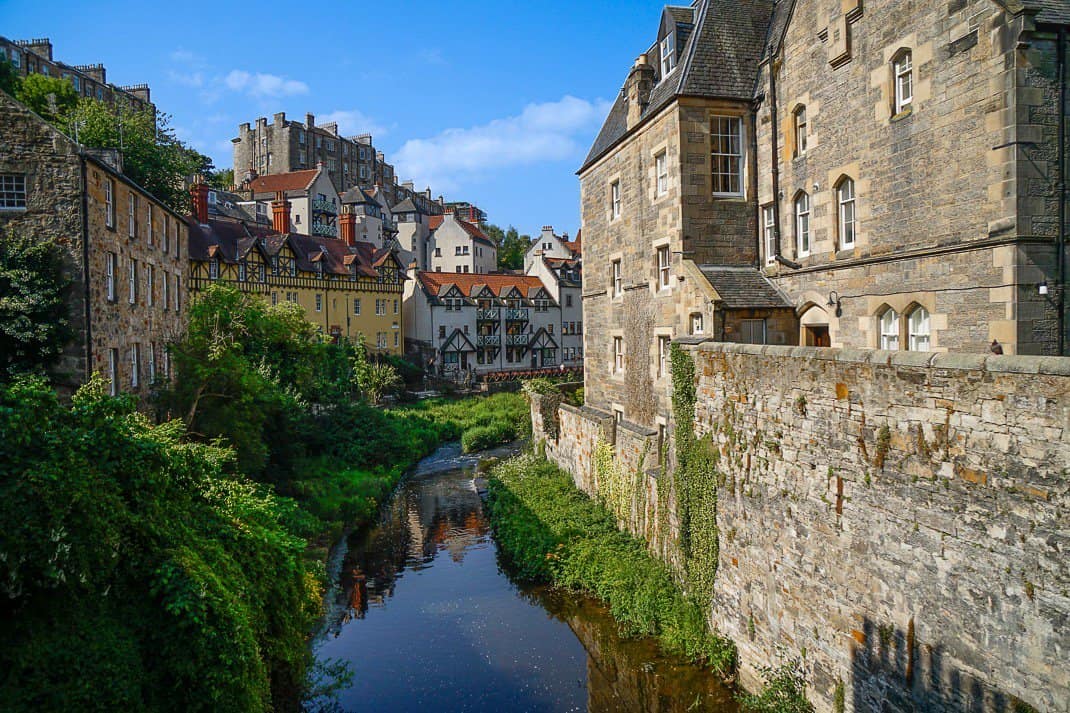
Our first stop was Dean Village. Walking distance from our hotel, Dean Village is a medieval time warp. A narrow cobblestone path leads to a babbling brook rambling between half-timbered buildings, tall green trees and the brick Rhema Church, built in 1839. A stone bridge dating to 1831 and a modern steel walking bridge offer postcard-perfect views of the prettiest neighborhood I’ve seen in Europe.
Dean Village started as a milling community in the 12th century and now is the picturesque headquarters of the Edinburgh School Board. We left when we saw a tour group led by a guide wearing a kilt.
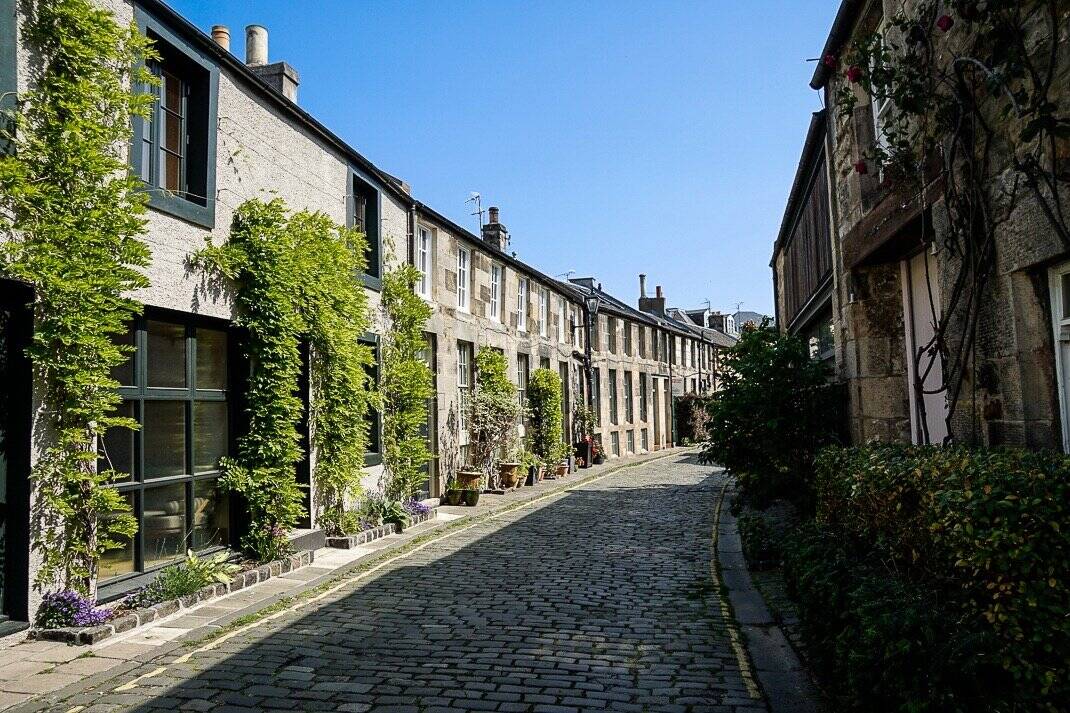
A 15-minute walk to the artsy neighborhood of Stockbridge led us to Circus Lane. Yes, it’s one of the most photographed streets in Scotland but the quiet, tranquil road is worth a stroll. It doesn’t take long. It’s a short, narrow, cobblestone lane lined with terraced cottages sporting colorful flower pots. Green trees and creepy ivy line the lane with St. Stephen’s Church (1828) towering over it at the far end.
The slight curve gives Circus Lane an even more intimate feel. I saw a Mercedes parked in a driveway. Some of the homes had realty ads. One two-bedroom, 74-square-meter (800 square-foot) home can be had for 475,000 pounds ($638,000).
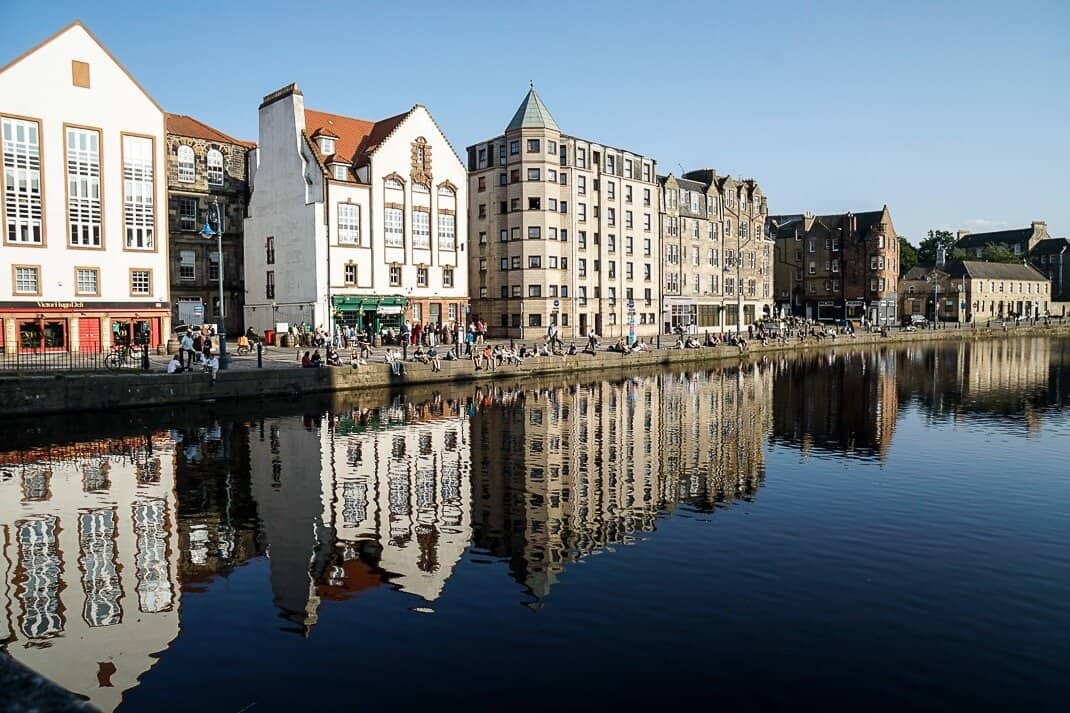
One neighborhood I wished I had discovered in ‘78, just for comparison value, was Leith. We found it at the end of a tram line on the north edge of Edinburgh on the sea. In 1128, Scottish King David I gave Leith to Holyrood Abbey, which he also founded. Leith was an independent town until Edinburgh took over its valuable docks and incorporated it into the city.
Back in the 1970s, it was a series of abandoned dockyards and whiskey warehouses. Today it may be the hippest neighborhood in Edinburgh. Four docks are spliced by an inlet lined with restaurants, bars and shops. When we arrived on a sunny 67-degree afternoon, well-dressed locals were drinking tall pints of beer, glasses of wine and chilly cocktails.
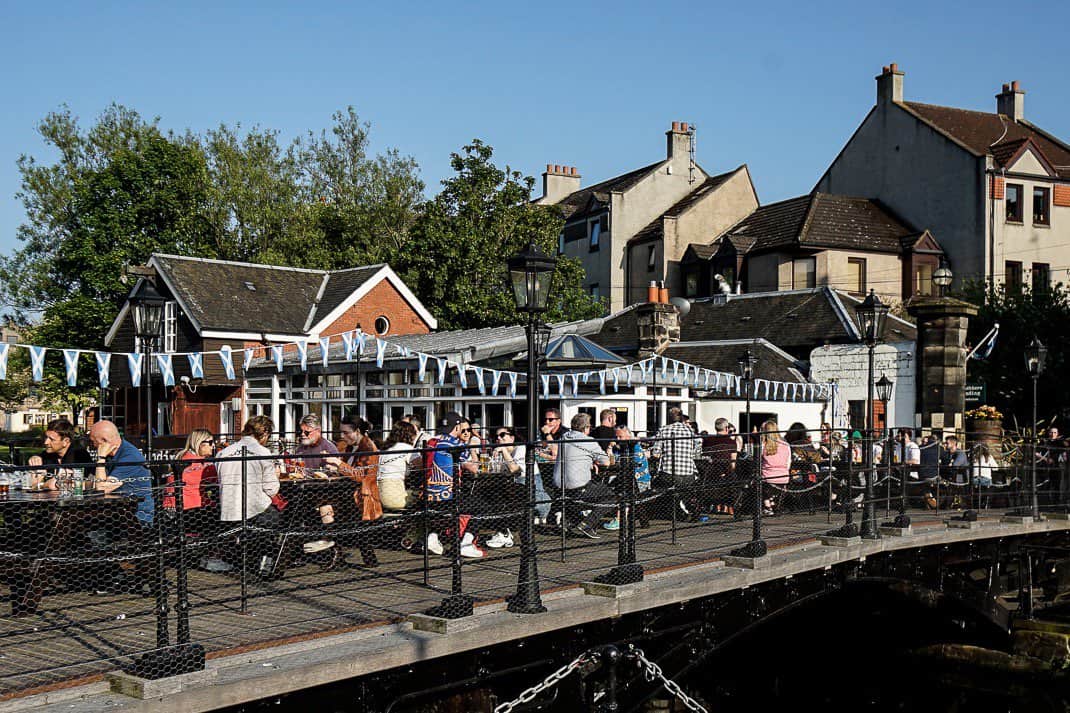
We crossed a bridge to a sprawling bar called Teuchters Landing. Teuchters is Scots for “Northerners,” Scottish from Aberdeen and higher who’d come south for drink and play. We sat outside at a row of tables looking out at the water and a floating terrace packed with drinkers. The blue and white crossed Scottish flag flew above a pedestrian bridge passing another platform of packed tables.
It had the air of hipster exclusivity. I asked a local next to us how much the apartments across the water cost to rent, like the two-bedroom where the man with his feet hanging over his balcony surfed his cellphone.
“Probably 1,500 pounds ($2,000),” she said.
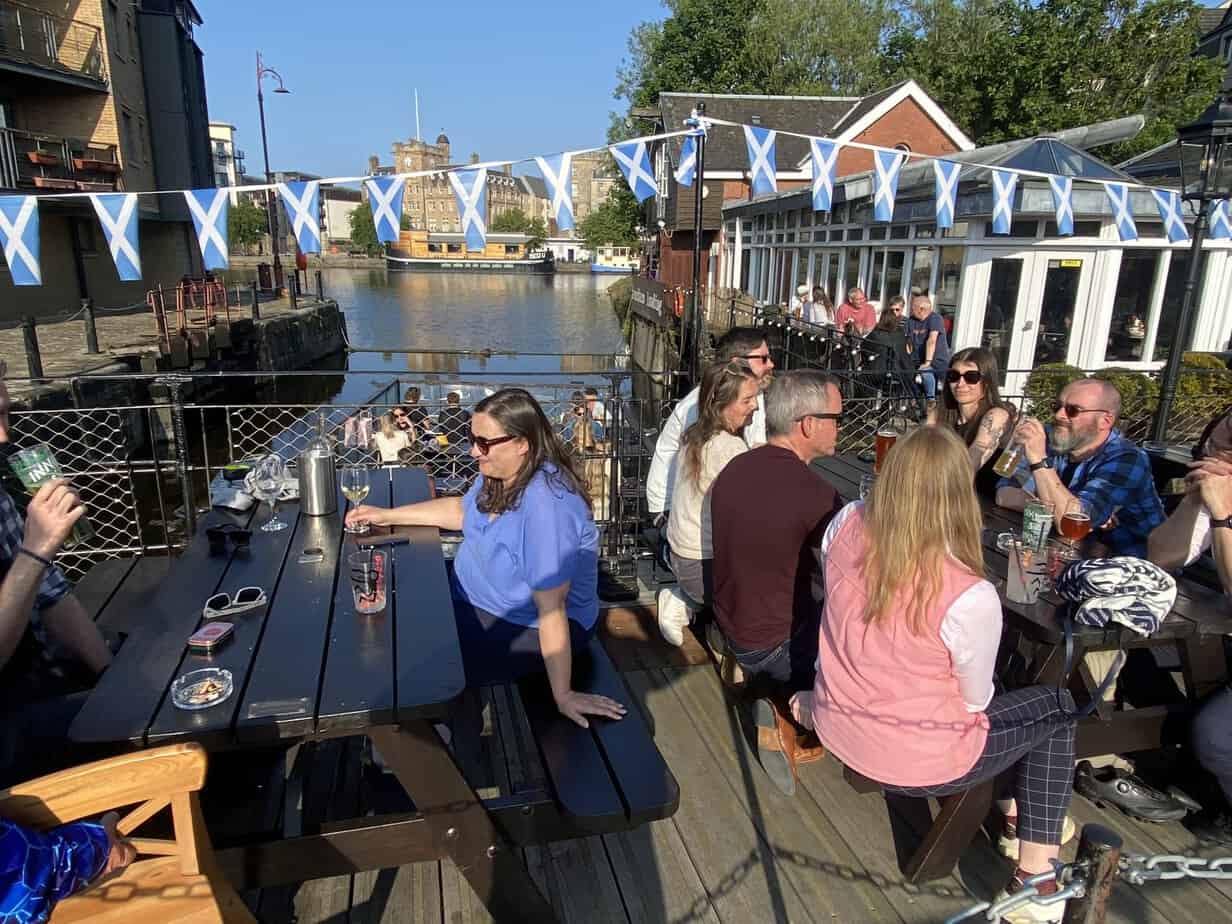
Later we dined at Fishers. It was 8 p.m. and it wouldn’t be dark for two more hours. The bright sun set on the water, and birds sang over the docks. The sea bass, covered in fresh Asian slaw and toasted cashews with a sweet nam jim sauce on the side, was caught that morning.
Yes, sometimes it’s good to be Scottish.
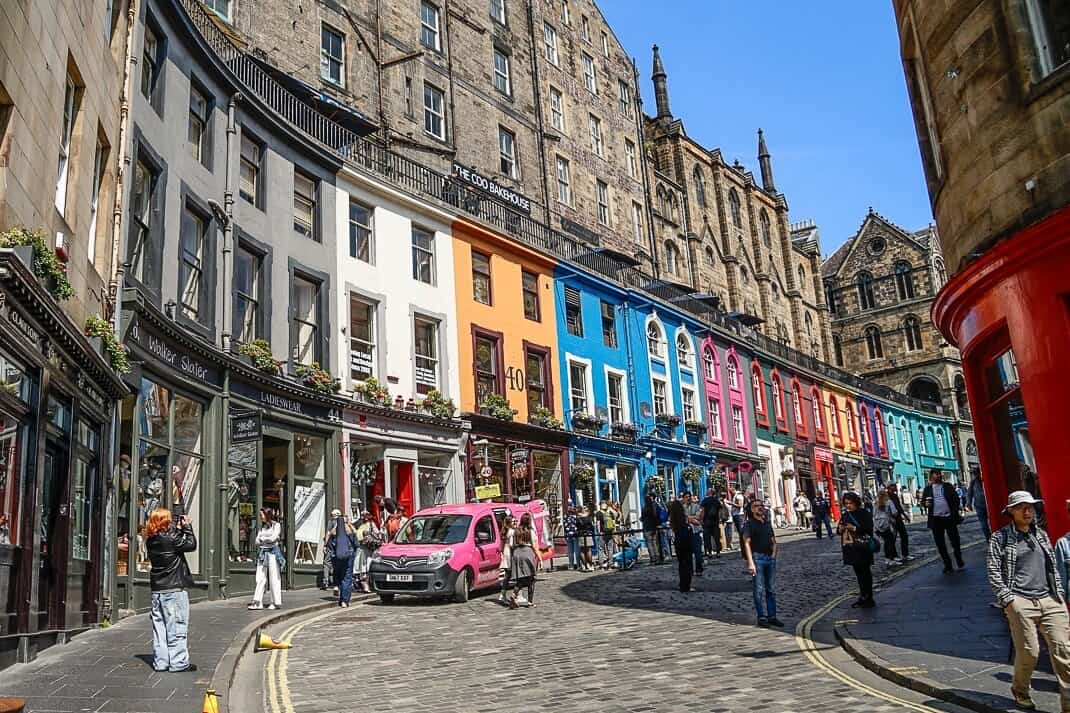
Chasing Hendersons
Back in the ‘70s, my circle of friends teased each other for our ethnic backgrounds. Whatever cheap, dumb stereotype we could find, we needled each other. Whenever my friend with German roots, Kurt Krueger, needed humbling, I’d say, “Win a war, then pop off.”
No one was spared. It wasn’t bigoted or racist. We were all white. It was merely jokes, mostly bad ones.
However, we all got my heritage wrong. I had it wrong. For years I thought Henderson was Danish. I put up with jokes about gay sailors and pastry. Why my friends associated Danes with gays is a plight on the lousy social geography taught in American schools.
Turns out, when I went to Denmark, my name was spelled “Hendersen” with an “e.” When I visited Edinburgh, I looked in the city phonebook. (Remember those?) It had pages and pages of Hendersons.
I am Scottish.
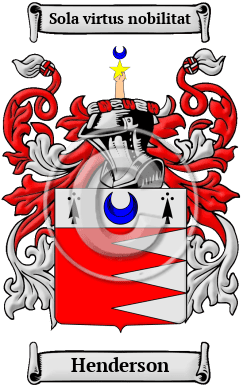
At least one-quarter. The other quarters are Swiss, Irish and English. Good thing my old Oregon friends didn’t know that part of me. I’d be forever labeled “a cheap, boring drunk who’s lousy in bed.” (Go ahead and guess which false – VERY false! – stereotype fits which nationality.)
In pursuit of answers in ‘78, I found myself at a lunch spot called Hendersons Salad Bar. Very good salad but no one had a clue who Hendersons were. On the train back to London, I met a drunk teen-age Henderson who sobered up long enough to say we come from a long line of sheep rustlers.
Before my recent trip, the Internet was little help. Henderson means the “son of Hendry or Henry.” One theory says we’re descendents from Great Henry, the son of King Nechtan, part of the Picts tribe who inhabited Scotland during the Iron Age.
I read we were known as great fighters and became bodyguards of McDonald chieftains. The most famous Henderson may have been Alexander Henderson (1583-1646) who drafted the National Covenant of Scotland.
We were also known to be pretty good with bagpipes. Great. In 400 years, we’ve gone from bagpipes to typewriters.
Edinburgh has two family history offices that help visitors track their family tree. My problem is neither I, nor any of my family, know jack about our history. My father, with whom I never had a meaningful conversation, never discussed his family background. He didn’t care.
I knew his dad had the same name but I had no idea where he came from, let alone when our ancestors came over from Scotland. I wrote a cousin near San Diego whom I’d seen once in the last 50 years. She never responded. Hey, we’re Presbyterians. We’re not close.
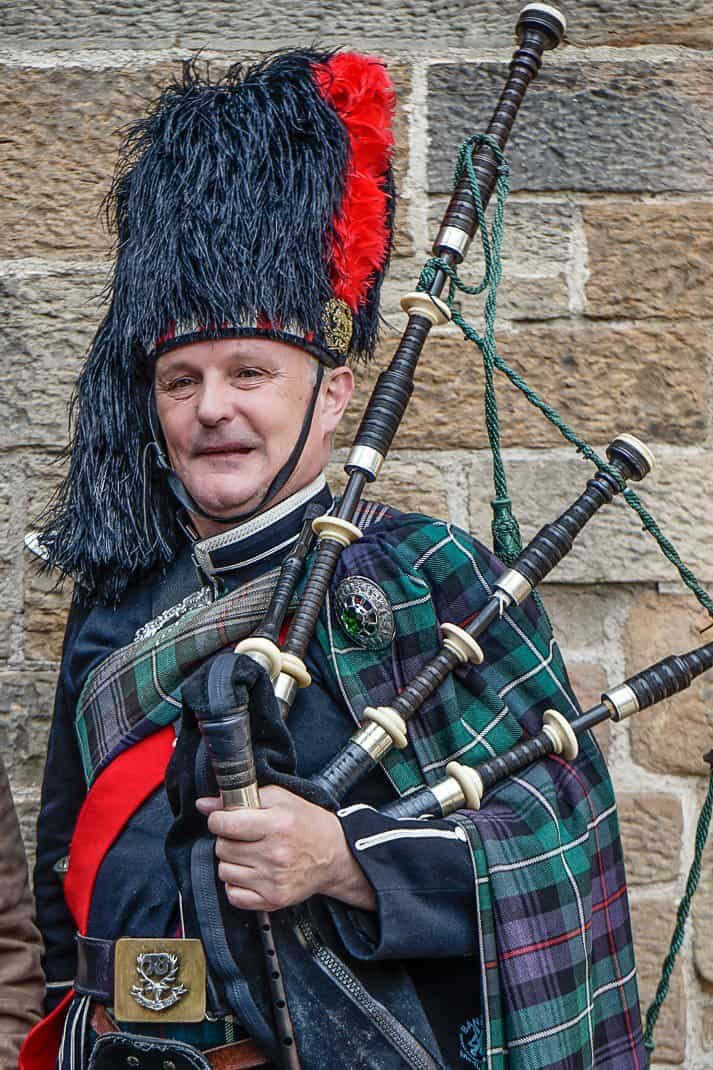
So I went to the Edinburgh Family History Centre with hat in hand but no documents. It’s located at the end of an elevated corridor above Victoria Street, a teeming tourist trap famous for its rainbow-colored buildings but lined with souvenir stores, bad fish ‘n chips restaurants and kilted tour guides.
The office has thick books packed with Scottish names and a bank of computers where people can dig on the Internet. The helpful clerk didn’t flinch when I told her I had nothing but my grandfather’s name.
She said if I could find my parents’ marriage certificate, maybe his dad’s birthplace is listed. Then find my grandfather’s birth certificate and find his parents’ name.
“Keep going backward,” she said.
In two steps I’d be back to the middle 1800s. But my parents’ marriage certificate? At that point, I was more in need of a cold beer.
As we walked to a pub, I took solace knowing that maybe one of the men playing the bagpipes on Victoria Street was a Henderson.
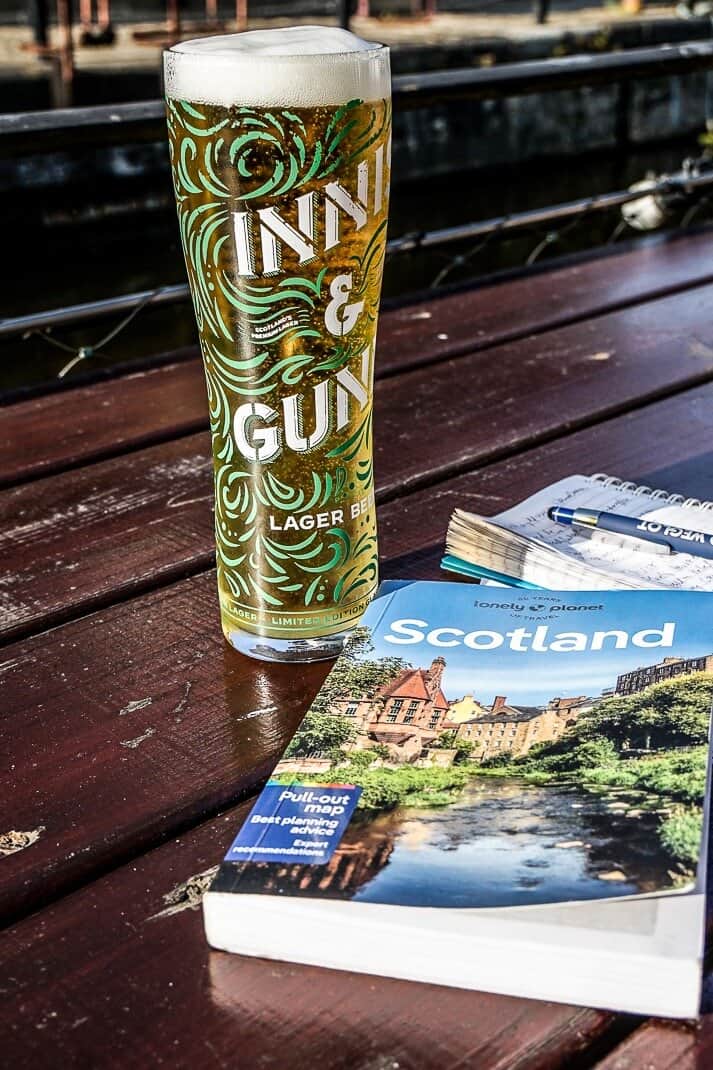
If you’re thinking of going …
How to get there: Try flying into Edinburgh. Trains from London range from €134-€205 one way. New York, Washington, Boston and Chicago all fly to Edinburgh direct. So does Amsterdam. One-way flights from London range from €58-€315.
Where to stay: Joivy Haymarket, 13 Rosebery Cres, 44-131-510-8567. Four-star hotel in West End. About 50 meters from tram stop that goes to airport and city center. Big room but expensive as most Edinburgh accommodations are. I paid €394 for two nights.
Where to eat: Fishers, 1 Shore, Leith, 44, 131-554-5666, www.fishersrestaurants.co.uk, noon-late Monday-Saturday, 12:30 p.m.-late Sunday. Excellent seafood restaurant with outdoor tables on the water and nautical theme in cozy inside. Mains from 19-35 pounds ($26-$48).
When to go: Every day in our June visit was sunny in the ‘60s. Sunlight from 4:30 a.m.-10 p.m. Average highs reach low 70s in July. Winters range from 33-45 degrees with 9-12 days of rain per month. About seven hours of daylight a day.
(Next: A disappointing Edinburgh-Inverness train ride but a surprise at the end.)


June 24, 2025 @ 3:52 pm
Thank you for your heartfelt reflections on returning to Scotland after 47 years. Your writing truly resonated with me. I eagerly await the next two parts of your journey, and I’m inspired to revisit Scotland as well. It’s a place full of beauty and history. Looking forward to reading more!
June 25, 2025 @ 9:49 am
Thanks, Marc. I hope the next two will inspire you just as much. Tuesday’s will be about a disappointing train trip to Inverness, a town I had heard bad things but I absolutely loved.
June 25, 2025 @ 7:44 am
A great article, thanks John. I’ve always wanted to visit Edinburgh, now I have a game plan to follow.
June 25, 2025 @ 9:48 am
You’re welcome, Virginia. But don’t stay in Raasay. In my blog I will mention how expensive it is as they have you trapped with no options.